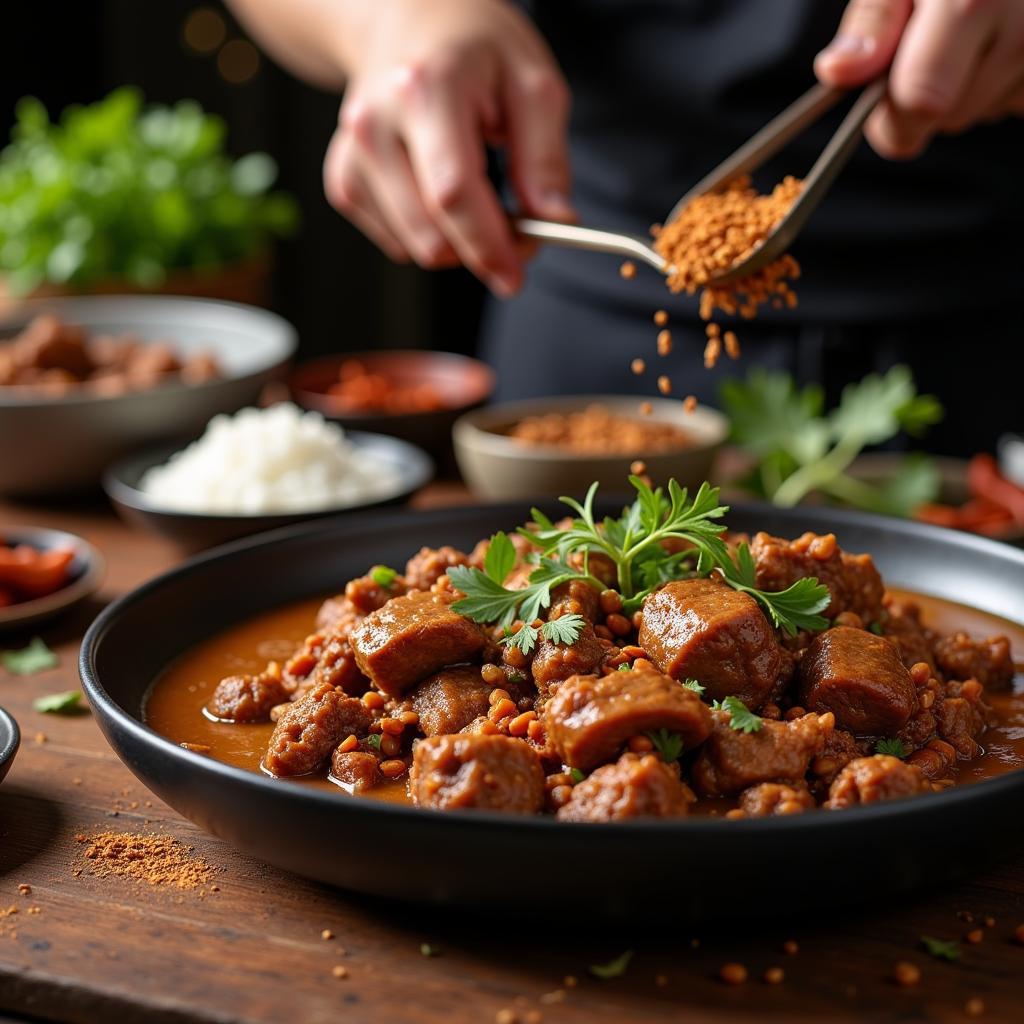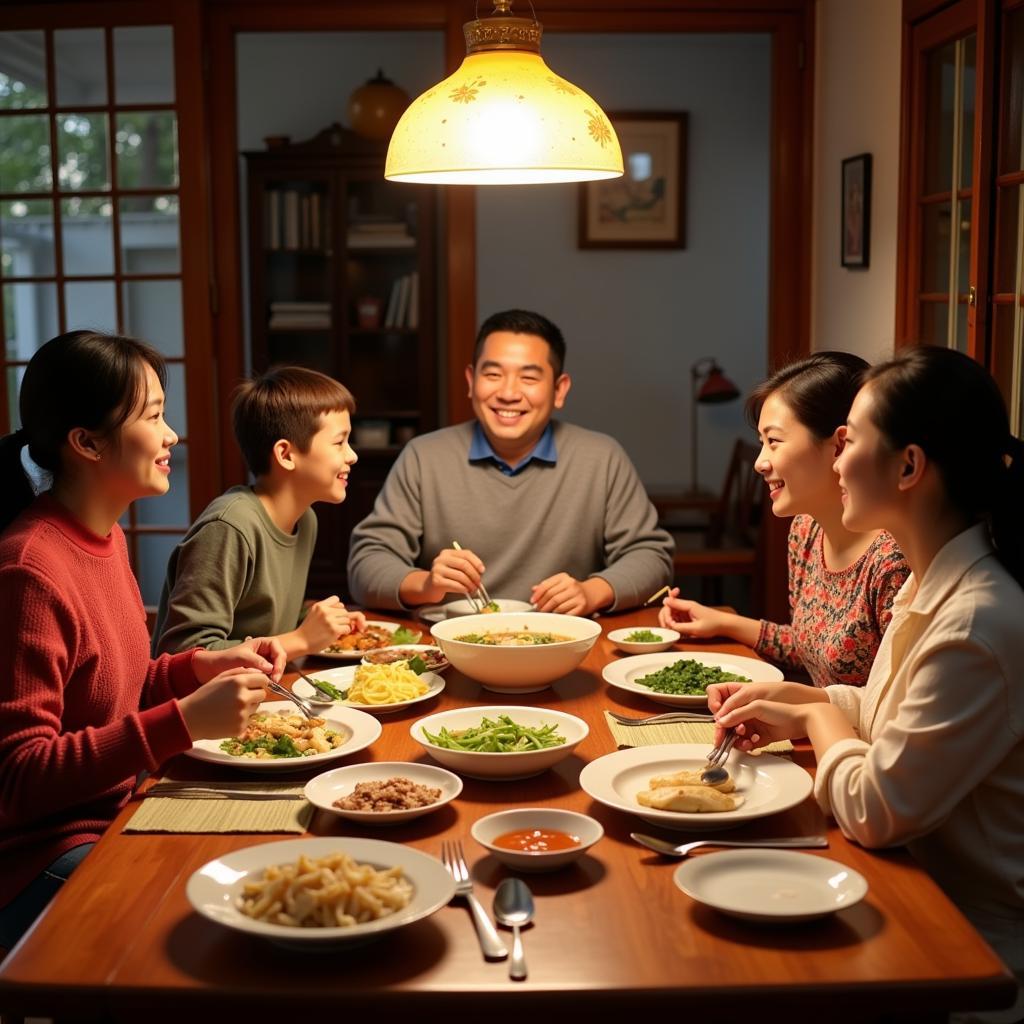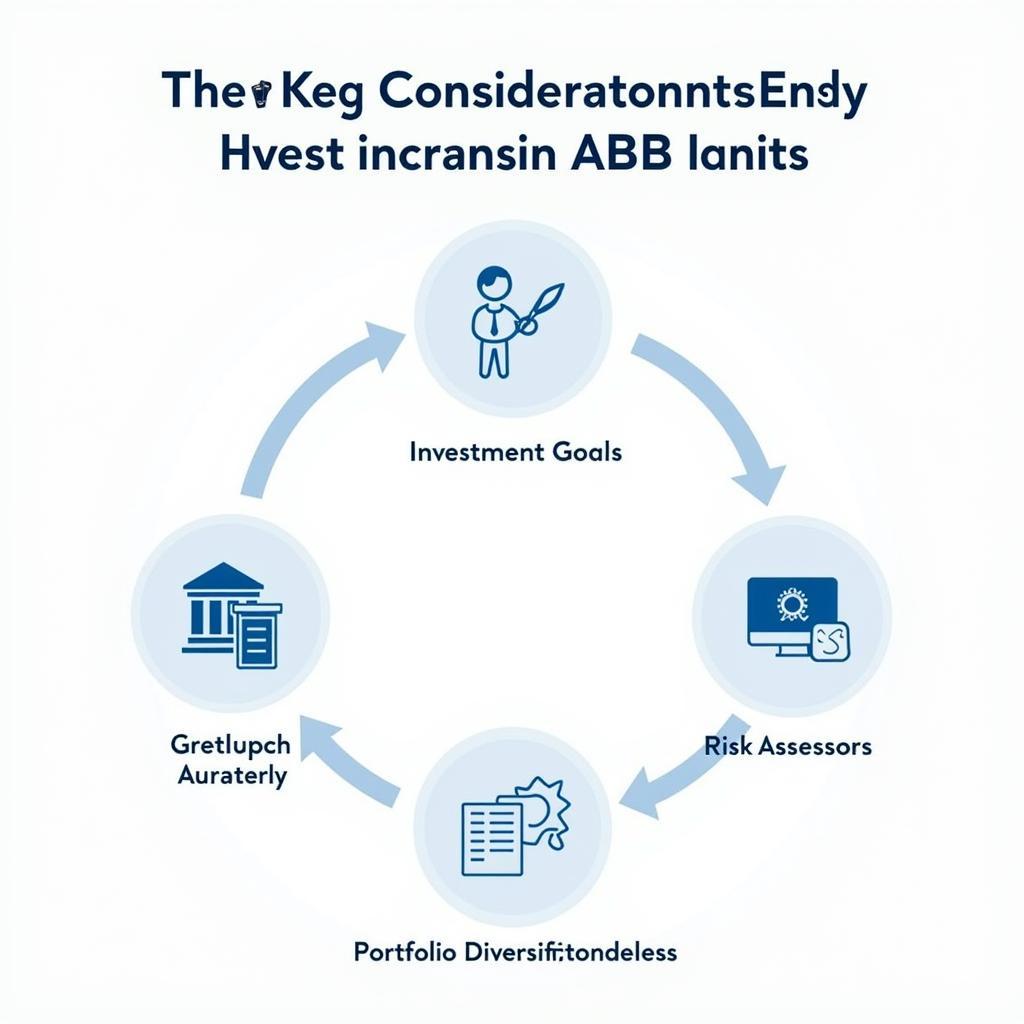Glutamate, a naturally occurring amino acid, plays a significant role in ASEAN cuisine, contributing to the savory “umami” taste that defines many regional dishes. From fish sauce in Vietnam to fermented shrimp paste in Malaysia, glutamate enhances the flavor profile of Southeast Asian food, reflecting a deep connection between culinary traditions and cultural heritage.
The Science of Umami and Glutamate in ASEAN Cuisine
Glutamate is the key component of umami, often described as the fifth basic taste alongside sweet, sour, salty, and bitter. While naturally present in many ingredients like tomatoes, mushrooms, and meat, glutamate is also added to ASEAN dishes in the form of flavor enhancers. These enhancers, often derived from fermented soybeans or sugarcane, boost the existing umami notes, creating a more complex and satisfying culinary experience.
How Glutamate Enhances ASEAN Flavors
The use of glutamate in ASEAN cooking goes beyond simply adding saltiness. It amplifies the inherent flavors of ingredients, creating a synergistic effect that elevates the overall taste profile. For example, in Thai green curry, a pinch of MSG (monosodium glutamate) can intensify the coconut milk’s richness and balance the spices’ heat. Similarly, in Indonesian rendang, a slow-cooked meat dish, glutamate enhances the depth of flavor developed during the long cooking process.  A chef preparing Indonesian Rendang with ingredients containing glutamate.
A chef preparing Indonesian Rendang with ingredients containing glutamate.
Cultural Significance of Glutamate in ASEAN
Glutamate’s prominence in ASEAN cuisine is intertwined with the region’s rich cultural tapestry. Fermented ingredients like fish sauce, soy sauce, and shrimp paste, all rich in glutamate, have been staples in Southeast Asian kitchens for centuries. These ingredients not only contribute umami but also reflect the resourcefulness and ingenuity of ASEAN communities in preserving and maximizing the flavor of their food.
Glutamate and the ASEAN Identity
The shared appreciation for umami and the use of glutamate in cooking can be seen as a unifying factor within the diverse ASEAN community. From the bustling street food stalls of Bangkok to the family kitchens of Hanoi, the savory taste of glutamate connects people across borders and cultures. This shared culinary heritage reinforces a sense of regional identity and strengthens the bonds between ASEAN nations.  A Vietnamese family enjoying a meal with dishes rich in glutamate.
A Vietnamese family enjoying a meal with dishes rich in glutamate.
Addressing Misconceptions about Glutamate
Despite its widespread use and cultural significance, glutamate has been the subject of some misconceptions and controversies. However, numerous scientific studies have affirmed the safety of glutamate as a food additive. Organizations like the World Health Organization and the US Food and Drug Administration have recognized glutamate as safe for consumption.
Conclusion
Glutamate’s role in ASEAN cuisine is undeniable. It enhances the savory flavors of countless dishes, reflecting a deep connection between culinary traditions and cultural heritage. By understanding the science and cultural significance of glutamate, we can appreciate its importance in shaping the unique and vibrant culinary landscape of Southeast Asia.
FAQ
- What is glutamate?
Glutamate is a naturally occurring amino acid that contributes to the umami taste. - Is MSG safe to consume?
Yes, numerous scientific studies and organizations have confirmed the safety of MSG. - What are some common sources of glutamate in ASEAN cuisine?
Fish sauce, soy sauce, shrimp paste, and MSG are common sources of glutamate. - How does glutamate enhance the flavor of food?
Glutamate amplifies the inherent flavors of ingredients, creating a more complex and satisfying taste. - What is the cultural significance of glutamate in ASEAN?
Glutamate-rich ingredients have been staples in ASEAN kitchens for centuries, reflecting cultural heritage and resourcefulness. - Why is umami important in ASEAN cuisine?
Umami, driven by glutamate, is a fundamental taste that defines the savory profile of many regional dishes. - How can I learn more about ASEAN cuisine?
Explore Asean Media’s other articles and resources on Southeast Asian food and culture.
For further assistance, please contact us at Phone: 0369020373, Email: [email protected] or visit us at: Thôn Ngọc Liễn, Hiệp Hòa, Bắc Giang, Việt Nam. We have a 24/7 customer service team.


